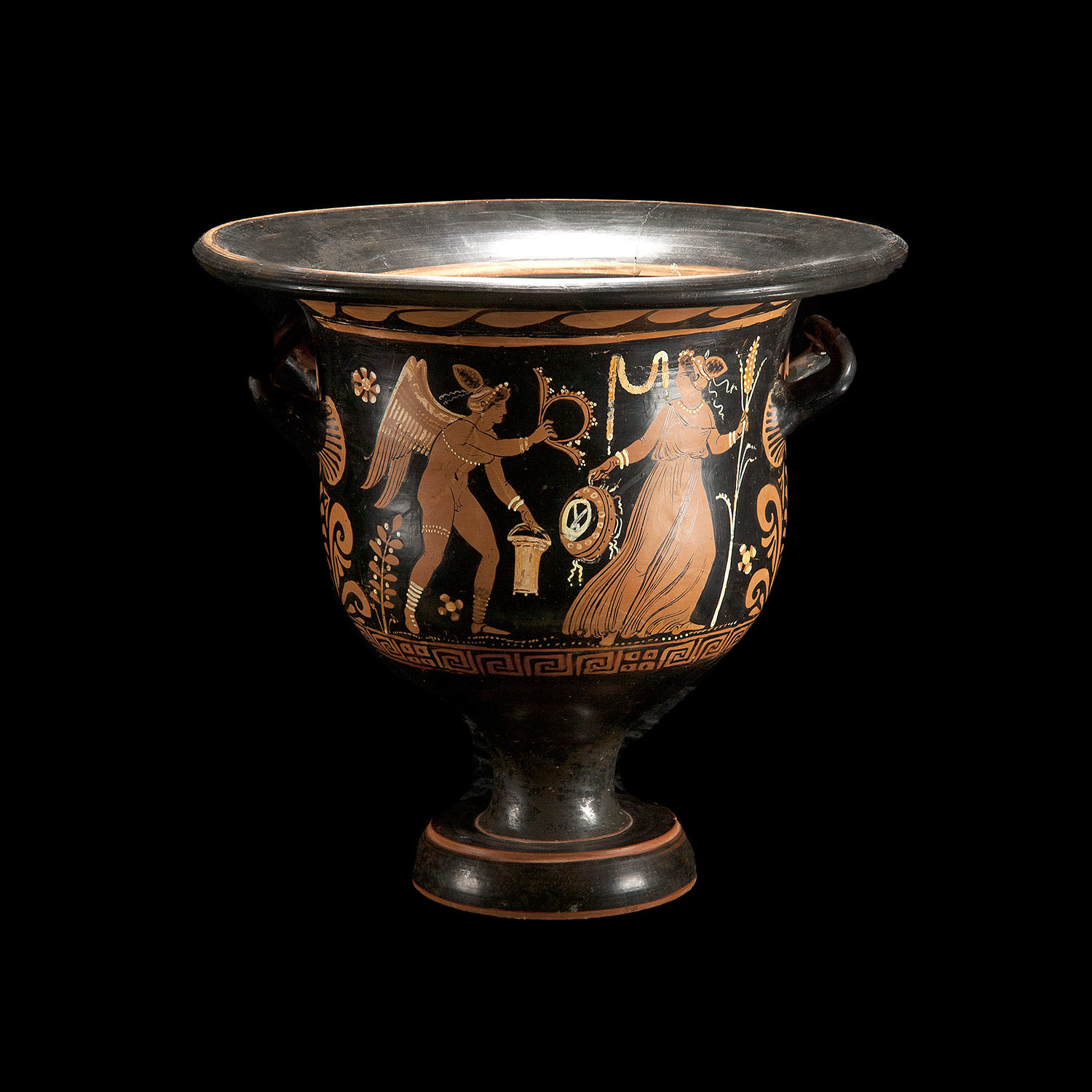Lewis
Member
- Aug 5, 2005
- 15,483
- 621
I Lewis believe that Peter is the author, I asked this about 4 years ago on this board, and now I am asking again. And I want you all to know what is being said, and what is being put out there about the 2nd book of Peter, so that you will be equipped to deal with this stuff.
SECOND PETER, WHO WROTE IT ?
Its Use in Modern Apologetics
By Mark McFall
[This essay was significantly updated in December of 2003].
It is common, in apologetic circles, to cite Second Peter 1:16 for an eyewitness account of the events that unfolded at the transfiguration in an attempt to demonstrate that it was historical and not mythological (e.g. see: Hanegraaff, CRI, http://www.equip.org/free/ CP0106.htm). But what might we expect from knowledgeable skeptics when we do this?
The informed skeptic is aware that out of all the epistles accepted into the cannon, none has received as much difficulty as Second Peter. Rejection of Peter as the author of Second Peter is the most common opinion today, and is supported by one of Christianity’s most authoritative conservative biblical scholars, Bruce Metzger, (a scholar that I personally have high regard for). Metzger writes:
"Although the author of this letter calls himself ‘Simon Peter, a servant and apostle of Jesus Christ’ (1:1), and makes reference to his being present at the transfiguration of Jesus Christ (1:18), several features of its style and contents have led nearly all modern scholars to regard it as the work of an unknown author of the early second century who wrote in Peter’s name....In light of such internal and external evidence one must conclude that 2 Peter was drawn up sometime after A.D. 100 by an admirer of Peter who wrote under the name of the great apostle in order to give his letter greater authority" (The New Testament, its background, growth, and content, pg. 258).
In scholarly circles, Second Peter is classified as a pseudonymity, a term referring to, as Metzger mentions, an author assuming the name of another and writing supposedly on his behalf. Gary Ferngren, author of Internal Criticism as a Criterion for Authorship in the New Testament, states the situation as to Second Peter accurately:
"...a majority of informed scholars regard 2 Peter as pseudonymous, and this view is taken by many as a proven fact...A strong case can be made for Peter’s authorship of the second epistle attributed to him. Yet such arguments are for the most part ignored in modern discussions and one may be permitted to wonder how many minds are influenced less by the evidence against Petrine authorship than by the fact that the opinio communis of modern scholarship regards the evidence against it as decisive" (Bibliotheca Sacra Vol. 134 #536: 341).
What we have here is a general consensus that few are willing to abandon in spite of the "strong case [that] can be made for Peter’s authorship" (Ferngren, Vol. 134 #536:341). For some Christian apologists, the thrust of this consensus is rather unsettling, but let us work through the basic criticisms associated with this consensus watching for evidence of how we should or should not use 2Peter 1:16 as an apologetic.
I. On Canonization and Textual Traces
Prior to being recognized as canonical by the Councils of Hippo and Carthage in the fourth century, Second Peter was in much dispute. The text was quoted less and discussed more by early Christians than any other book of the New Testament as the Christian historian Eusebius once acknowledged: "that which is called the second, we have not, indeed, understood to be embodied with the sacred books, yet as it appeared useful to many, it was studiously read with the other Scriptures"(H.E. 3.3). Even Origen, who lived about a century (ca. A.D. 185-253) before Eusebius, mentioned that Peter "left one epistle undisputed," and that "the second left by him, for on this there is some doubt" (as recorded by Eusebius, H.E. VI. 25). Further back than Origen, however, opinions are more difficult to trace.
With the exception of Clement of Alexandria (see: Hastings, Dictionary of the Bible, Vol. III, pg. 802-803), Second Peter is almost nowhere mentioned (in commentary works) by any second century author (e.g. Ireneaus, Tertullian, Cyprian, etc…) as only traces of the text itself appear in second century literature. On that, scholars have noted that Second Peter can be detected in the Apocalypes of Peter and the Sahidic version of the Bible (ca. A.D. 135; A.D. 200). Thereafter, we have a manuscript that scholars date to around A.D. 350 which includes 1 Peter 1:1-5:14 and 2 Peter 1:1-3:18 as well as Jude 1-25 (Bodmer Papyri 72). This manuscript fragment, scholars inform us, "was made for private use and [probably] not for church meetings" as it also contains the Nativity of Mary, the apocryphal correspondence of Paul to the Corinthians, the eleventh ode of Solomon, Melito’s Homily on the Passover, a fragment of a hymn, the Apology of Phileas, and Psalms 33 and 34 (see: Comfort/Barrett, The Complete Text of the Earliest New Testament Manuscripts, pg. 469). A century later, Second Peter can also be detected in the Bohairic version of the Bible, and while this evidence isn’t necessarily impressive, it does show, at the very least, that traces of Second Peter appear thru various literary facets as far back as the second century.
II. The Gray Area between Peter’s Death and Second Peter’s Composition.
According to scholars, Peter’s martyrdom is said, with some uncertainty, to have occurred in 67 A.D. If Peter is the author of Second Peter than he obviously had to pen it prior to his death and this is where things get real vague: most apologetic books mention the noted archaeologist William F. Albright who proposed the composition date for Second Peter before 80 A.D (Geisler, When Critics Ask, pg. 538). While this date leans in a direction that favors the idea that Peter actually wrote Second Peter, skeptics are likely to point out that it still falls short, (due to vagueness), given reports that place Peter’s death in 67 A.D. Skeptics commonly cite Bruce Metzger and boast of the large portion of biblical scholars who believe Second Peter was drawn up sometime after 100 A.D., but as we will soon see, this type of appeal to authority whether from friendly or hostile sources, leads nowhere.
In that regard, all a Christian must do to create a stale mate is to give a few scholarly references of his own, and there are biblical scholars that have broken ranks. For instance, respected academic scholar David A. Fiensy dates Second Peter to 65 A.D.; and J.A.T. Robinson dates Second Peter to 61 or 62 A.D.; while A.T. Robertson, whom Metzger refers to as "one of the leading New Testament scholars of [his] time" (Reminiscences of an Octogenarian, pg. 11), dates Second Peter to 67 A.D. (Word Pictures, Vol. 6, pg. 144). As you can see, appealing to authority does not allow one to get too far when the leading authorities disagree.
III. Basic Arguments
Since many skeptics know how damaging Metzger's view is to the average churchgoer who isn’t accustomed to exercising critical thought in regards to scripture within a Christian context, we will briefly review Metzger’s basic arguments to develop our own understanding. According to Metzger:
"Unlike the style of 1 Peter, which is written in fluent koine Greek, the style of 2 Peter is almost pseudo-literary. The wording is unusual, artificial, and often obscure; it is the one book in the New Testament which gains by translation. Though some have suggested that the marked difference in style between the two letters might be accounted for by supposing them to be the work of different amanuenses, several passages of 2 Peter point to a date long after Peter’s lifetime" (The New Testament, pg. 258).
In response to this argument it should be noted that Metzger is obviously aware of the "marked differences" that could be accounted for by "different amanuenses" (i.e. secretaries, e.g. First Peter 5:12) but sees "several passages" that could be interpreted as "point[ing] to a date long after Peter’s lifetime." Of these, he states:
"Thus, the section dealing with the delay of the second coming of Christ (3:3-4) presupposes that the first generation of Christians--to which Peter belonged--had passed away" (Ibid., pg. 258).
Here, it is reckoned that because Second Peter refers to the "passing of the fathers" (3:4) in reference to New Testament fathers (i.e. apostles) that Peter could not have written it himself since all the apostles had not yet died. The problem however, is that the phrase, "oi patere" ("the fathers"), is consistently used in the New Testament to refer to Old Testament fathers, as biblical scholars Michael Green and Donald Guthrie have publicly pointed out (see: Green, The Second Epistle General of Peter, pg. 26; Guthrie, New Testament Introduction, 4th ed, pg. 829). "Furthermore," writes Metzger:
"The letters of Paul, it appears, have not only been collected but are referred to as "scripture" (3:16), a term that was not applied to them until some considerable time after the apostle’s death" (The New Testament, pg. 258).
When Second Peter refers to all of Paul’s writings as being on par with "other Scriptures," it is seen by some, in this case Metzger, to clinch pseudonymity, because not all of Paul’s letters were written at the time of Peter’s death. However, "all" could simply mean "all he has written so far." A similar situation occurs in Second Timothy 3:16 in which the author refers to "all scripture" as being "inspired by God," but it is unclear what "all" encompasses because much of the New Testament wasn’t even written when Second Timothy was penned. Regardless of that thought, Metzger continues:
"The second chapter of 2 Peter embodies most of the little letter of Jude, which probably date from the later part of the first century" (The New Testament, pg. 258).
In response to this, it should be noted that even a casual reading of the English text shows a common message or sermon strain between Second Peter and Jude (see: 2 Peter / Jude Comparisons). With that observable fact, however, comes the notion that Second Peter borrowed from Jude. Since Jude is seen by some prominent scholars to have been composed in the early part of the second century, the implication is alleged that Second Peter was also composed around this same time. In reality however, there is no compelling evidence to show a late date for Jude as there are traces of it in various early second century writings which would suggest an earlier composition.
[see: Pseudo-Barnabas {c. AD 70-130}; Clement of Rome {c. AD 95-97}; the Shepherd of Hermas {c. AD 115-140}; Polycarp {c. AD 110-150}; the Didache {c. AD 120-150}; Athenagoras {c. AD 177}; Theophilus of Antioch {died AD 183-185}; the Muratorian Canon {c. AD 170}; and Tertullian {c. AD 150-220}]
In fact, while there are important scholars that date Jude as one of the latest books, there are other scholars, such as Richard Bauckham of the University of Manchester, who have stated just the opposite in critical and objective resources like the Anchor Bible Dictionary:
"Perhaps all that can be said, in general, is that the letter of Jude gives a general impression of primitiveness and contains nothing that requires a late date. It could very plausibly be dated in the 50s, and might be one of the earliest of the NT writings" (Vol. 3, pg. 1101).
Given the vast conflicts in dating by leading authorities on Second Peter, the dating of Peter’s death, and even the dating of the epistle of Jude, one can rightly judge that scholars are basically guessing. In other words, scholars are essentially attempting to be precise where precision will always elude them; that there is not enough evidence to guide scholarly minds with any degree of certainty doesn’t seem to concern the academic consensus. Of particular interest, is biblical scholar Joseph Mayor’s view that while affirming Second Peter pseudonymity admits:
"[T]here are many difficulties in the way of accepting the genuineness of this Epistle, but the manner in which St. Paul is spoken of seems to me just what we should have expected from his brother apostle" [i.e. Peter] (The Epistle of St. Jude and the Second epistle of St. Peter: Greek text with introduction notes and comments, pg. 168).
Most scholars who embrace the notion that Second Peter is pseudepigrapha express the same type of concern noted above but ultimately end up pushing it to the wayside. Even Metzger, who categorically stated that "several features of [2Peter’s] style and contents have led nearly all modern scholars [of which he is one] to regard it as the work of an unknown author of the early second century who wrote in Peter’s name," has been captured at more objective moments expressing concern for that observation. Indeed, writing almost a decade later for the Journal of Biblical Literature, Metzger remarked:
"In considering questions concerning individual pseudepigrapha within the NT, e.g., the Pastoral Epistles or 2Peter, one must beware against relying upon proofs based upon statistical analysis of vocabulary, inasmuch as the brevity of the documents limits the significance of such date in determining authorship" (JBL, Vol. 91, No. 1, pg. 19, Fn., 61, 1972).
My point in bringing this to light is that the grass is no more greener on either side of the debate.
IV. Conclusion, get the conclusion at the below link,
http://www.frontline-apologetics.com/2n ... rship.html
SECOND PETER, WHO WROTE IT ?
Its Use in Modern Apologetics
By Mark McFall
[This essay was significantly updated in December of 2003].
It is common, in apologetic circles, to cite Second Peter 1:16 for an eyewitness account of the events that unfolded at the transfiguration in an attempt to demonstrate that it was historical and not mythological (e.g. see: Hanegraaff, CRI, http://www.equip.org/free/ CP0106.htm). But what might we expect from knowledgeable skeptics when we do this?
The informed skeptic is aware that out of all the epistles accepted into the cannon, none has received as much difficulty as Second Peter. Rejection of Peter as the author of Second Peter is the most common opinion today, and is supported by one of Christianity’s most authoritative conservative biblical scholars, Bruce Metzger, (a scholar that I personally have high regard for). Metzger writes:
"Although the author of this letter calls himself ‘Simon Peter, a servant and apostle of Jesus Christ’ (1:1), and makes reference to his being present at the transfiguration of Jesus Christ (1:18), several features of its style and contents have led nearly all modern scholars to regard it as the work of an unknown author of the early second century who wrote in Peter’s name....In light of such internal and external evidence one must conclude that 2 Peter was drawn up sometime after A.D. 100 by an admirer of Peter who wrote under the name of the great apostle in order to give his letter greater authority" (The New Testament, its background, growth, and content, pg. 258).
In scholarly circles, Second Peter is classified as a pseudonymity, a term referring to, as Metzger mentions, an author assuming the name of another and writing supposedly on his behalf. Gary Ferngren, author of Internal Criticism as a Criterion for Authorship in the New Testament, states the situation as to Second Peter accurately:
"...a majority of informed scholars regard 2 Peter as pseudonymous, and this view is taken by many as a proven fact...A strong case can be made for Peter’s authorship of the second epistle attributed to him. Yet such arguments are for the most part ignored in modern discussions and one may be permitted to wonder how many minds are influenced less by the evidence against Petrine authorship than by the fact that the opinio communis of modern scholarship regards the evidence against it as decisive" (Bibliotheca Sacra Vol. 134 #536: 341).
What we have here is a general consensus that few are willing to abandon in spite of the "strong case [that] can be made for Peter’s authorship" (Ferngren, Vol. 134 #536:341). For some Christian apologists, the thrust of this consensus is rather unsettling, but let us work through the basic criticisms associated with this consensus watching for evidence of how we should or should not use 2Peter 1:16 as an apologetic.
I. On Canonization and Textual Traces
Prior to being recognized as canonical by the Councils of Hippo and Carthage in the fourth century, Second Peter was in much dispute. The text was quoted less and discussed more by early Christians than any other book of the New Testament as the Christian historian Eusebius once acknowledged: "that which is called the second, we have not, indeed, understood to be embodied with the sacred books, yet as it appeared useful to many, it was studiously read with the other Scriptures"(H.E. 3.3). Even Origen, who lived about a century (ca. A.D. 185-253) before Eusebius, mentioned that Peter "left one epistle undisputed," and that "the second left by him, for on this there is some doubt" (as recorded by Eusebius, H.E. VI. 25). Further back than Origen, however, opinions are more difficult to trace.
With the exception of Clement of Alexandria (see: Hastings, Dictionary of the Bible, Vol. III, pg. 802-803), Second Peter is almost nowhere mentioned (in commentary works) by any second century author (e.g. Ireneaus, Tertullian, Cyprian, etc…) as only traces of the text itself appear in second century literature. On that, scholars have noted that Second Peter can be detected in the Apocalypes of Peter and the Sahidic version of the Bible (ca. A.D. 135; A.D. 200). Thereafter, we have a manuscript that scholars date to around A.D. 350 which includes 1 Peter 1:1-5:14 and 2 Peter 1:1-3:18 as well as Jude 1-25 (Bodmer Papyri 72). This manuscript fragment, scholars inform us, "was made for private use and [probably] not for church meetings" as it also contains the Nativity of Mary, the apocryphal correspondence of Paul to the Corinthians, the eleventh ode of Solomon, Melito’s Homily on the Passover, a fragment of a hymn, the Apology of Phileas, and Psalms 33 and 34 (see: Comfort/Barrett, The Complete Text of the Earliest New Testament Manuscripts, pg. 469). A century later, Second Peter can also be detected in the Bohairic version of the Bible, and while this evidence isn’t necessarily impressive, it does show, at the very least, that traces of Second Peter appear thru various literary facets as far back as the second century.
II. The Gray Area between Peter’s Death and Second Peter’s Composition.
According to scholars, Peter’s martyrdom is said, with some uncertainty, to have occurred in 67 A.D. If Peter is the author of Second Peter than he obviously had to pen it prior to his death and this is where things get real vague: most apologetic books mention the noted archaeologist William F. Albright who proposed the composition date for Second Peter before 80 A.D (Geisler, When Critics Ask, pg. 538). While this date leans in a direction that favors the idea that Peter actually wrote Second Peter, skeptics are likely to point out that it still falls short, (due to vagueness), given reports that place Peter’s death in 67 A.D. Skeptics commonly cite Bruce Metzger and boast of the large portion of biblical scholars who believe Second Peter was drawn up sometime after 100 A.D., but as we will soon see, this type of appeal to authority whether from friendly or hostile sources, leads nowhere.
In that regard, all a Christian must do to create a stale mate is to give a few scholarly references of his own, and there are biblical scholars that have broken ranks. For instance, respected academic scholar David A. Fiensy dates Second Peter to 65 A.D.; and J.A.T. Robinson dates Second Peter to 61 or 62 A.D.; while A.T. Robertson, whom Metzger refers to as "one of the leading New Testament scholars of [his] time" (Reminiscences of an Octogenarian, pg. 11), dates Second Peter to 67 A.D. (Word Pictures, Vol. 6, pg. 144). As you can see, appealing to authority does not allow one to get too far when the leading authorities disagree.
III. Basic Arguments
Since many skeptics know how damaging Metzger's view is to the average churchgoer who isn’t accustomed to exercising critical thought in regards to scripture within a Christian context, we will briefly review Metzger’s basic arguments to develop our own understanding. According to Metzger:
"Unlike the style of 1 Peter, which is written in fluent koine Greek, the style of 2 Peter is almost pseudo-literary. The wording is unusual, artificial, and often obscure; it is the one book in the New Testament which gains by translation. Though some have suggested that the marked difference in style between the two letters might be accounted for by supposing them to be the work of different amanuenses, several passages of 2 Peter point to a date long after Peter’s lifetime" (The New Testament, pg. 258).
In response to this argument it should be noted that Metzger is obviously aware of the "marked differences" that could be accounted for by "different amanuenses" (i.e. secretaries, e.g. First Peter 5:12) but sees "several passages" that could be interpreted as "point[ing] to a date long after Peter’s lifetime." Of these, he states:
"Thus, the section dealing with the delay of the second coming of Christ (3:3-4) presupposes that the first generation of Christians--to which Peter belonged--had passed away" (Ibid., pg. 258).
Here, it is reckoned that because Second Peter refers to the "passing of the fathers" (3:4) in reference to New Testament fathers (i.e. apostles) that Peter could not have written it himself since all the apostles had not yet died. The problem however, is that the phrase, "oi patere" ("the fathers"), is consistently used in the New Testament to refer to Old Testament fathers, as biblical scholars Michael Green and Donald Guthrie have publicly pointed out (see: Green, The Second Epistle General of Peter, pg. 26; Guthrie, New Testament Introduction, 4th ed, pg. 829). "Furthermore," writes Metzger:
"The letters of Paul, it appears, have not only been collected but are referred to as "scripture" (3:16), a term that was not applied to them until some considerable time after the apostle’s death" (The New Testament, pg. 258).
When Second Peter refers to all of Paul’s writings as being on par with "other Scriptures," it is seen by some, in this case Metzger, to clinch pseudonymity, because not all of Paul’s letters were written at the time of Peter’s death. However, "all" could simply mean "all he has written so far." A similar situation occurs in Second Timothy 3:16 in which the author refers to "all scripture" as being "inspired by God," but it is unclear what "all" encompasses because much of the New Testament wasn’t even written when Second Timothy was penned. Regardless of that thought, Metzger continues:
"The second chapter of 2 Peter embodies most of the little letter of Jude, which probably date from the later part of the first century" (The New Testament, pg. 258).
In response to this, it should be noted that even a casual reading of the English text shows a common message or sermon strain between Second Peter and Jude (see: 2 Peter / Jude Comparisons). With that observable fact, however, comes the notion that Second Peter borrowed from Jude. Since Jude is seen by some prominent scholars to have been composed in the early part of the second century, the implication is alleged that Second Peter was also composed around this same time. In reality however, there is no compelling evidence to show a late date for Jude as there are traces of it in various early second century writings which would suggest an earlier composition.
[see: Pseudo-Barnabas {c. AD 70-130}; Clement of Rome {c. AD 95-97}; the Shepherd of Hermas {c. AD 115-140}; Polycarp {c. AD 110-150}; the Didache {c. AD 120-150}; Athenagoras {c. AD 177}; Theophilus of Antioch {died AD 183-185}; the Muratorian Canon {c. AD 170}; and Tertullian {c. AD 150-220}]
In fact, while there are important scholars that date Jude as one of the latest books, there are other scholars, such as Richard Bauckham of the University of Manchester, who have stated just the opposite in critical and objective resources like the Anchor Bible Dictionary:
"Perhaps all that can be said, in general, is that the letter of Jude gives a general impression of primitiveness and contains nothing that requires a late date. It could very plausibly be dated in the 50s, and might be one of the earliest of the NT writings" (Vol. 3, pg. 1101).
Given the vast conflicts in dating by leading authorities on Second Peter, the dating of Peter’s death, and even the dating of the epistle of Jude, one can rightly judge that scholars are basically guessing. In other words, scholars are essentially attempting to be precise where precision will always elude them; that there is not enough evidence to guide scholarly minds with any degree of certainty doesn’t seem to concern the academic consensus. Of particular interest, is biblical scholar Joseph Mayor’s view that while affirming Second Peter pseudonymity admits:
"[T]here are many difficulties in the way of accepting the genuineness of this Epistle, but the manner in which St. Paul is spoken of seems to me just what we should have expected from his brother apostle" [i.e. Peter] (The Epistle of St. Jude and the Second epistle of St. Peter: Greek text with introduction notes and comments, pg. 168).
Most scholars who embrace the notion that Second Peter is pseudepigrapha express the same type of concern noted above but ultimately end up pushing it to the wayside. Even Metzger, who categorically stated that "several features of [2Peter’s] style and contents have led nearly all modern scholars [of which he is one] to regard it as the work of an unknown author of the early second century who wrote in Peter’s name," has been captured at more objective moments expressing concern for that observation. Indeed, writing almost a decade later for the Journal of Biblical Literature, Metzger remarked:
"In considering questions concerning individual pseudepigrapha within the NT, e.g., the Pastoral Epistles or 2Peter, one must beware against relying upon proofs based upon statistical analysis of vocabulary, inasmuch as the brevity of the documents limits the significance of such date in determining authorship" (JBL, Vol. 91, No. 1, pg. 19, Fn., 61, 1972).
My point in bringing this to light is that the grass is no more greener on either side of the debate.
IV. Conclusion, get the conclusion at the below link,
http://www.frontline-apologetics.com/2n ... rship.html






 A good reminder for us all.
A good reminder for us all.